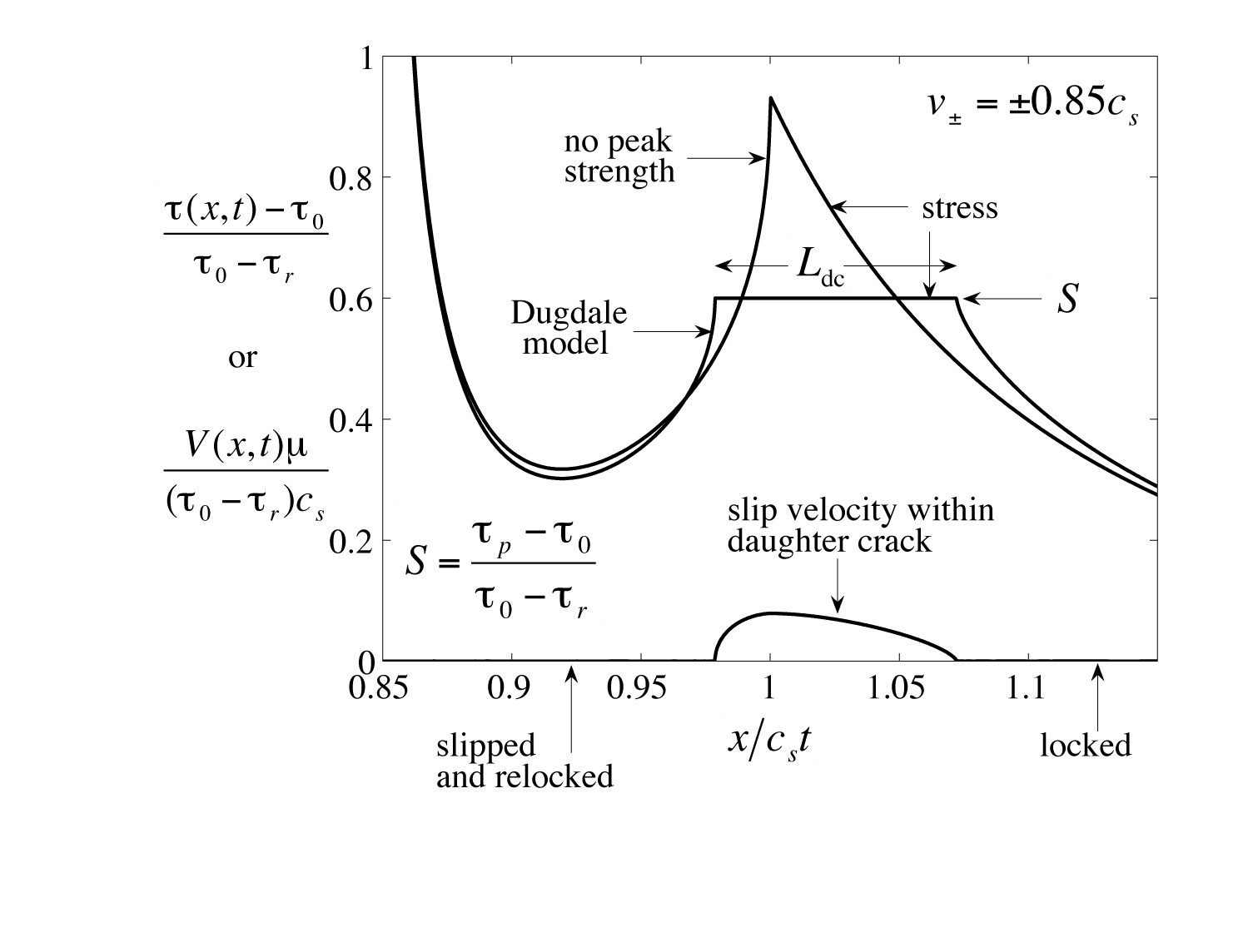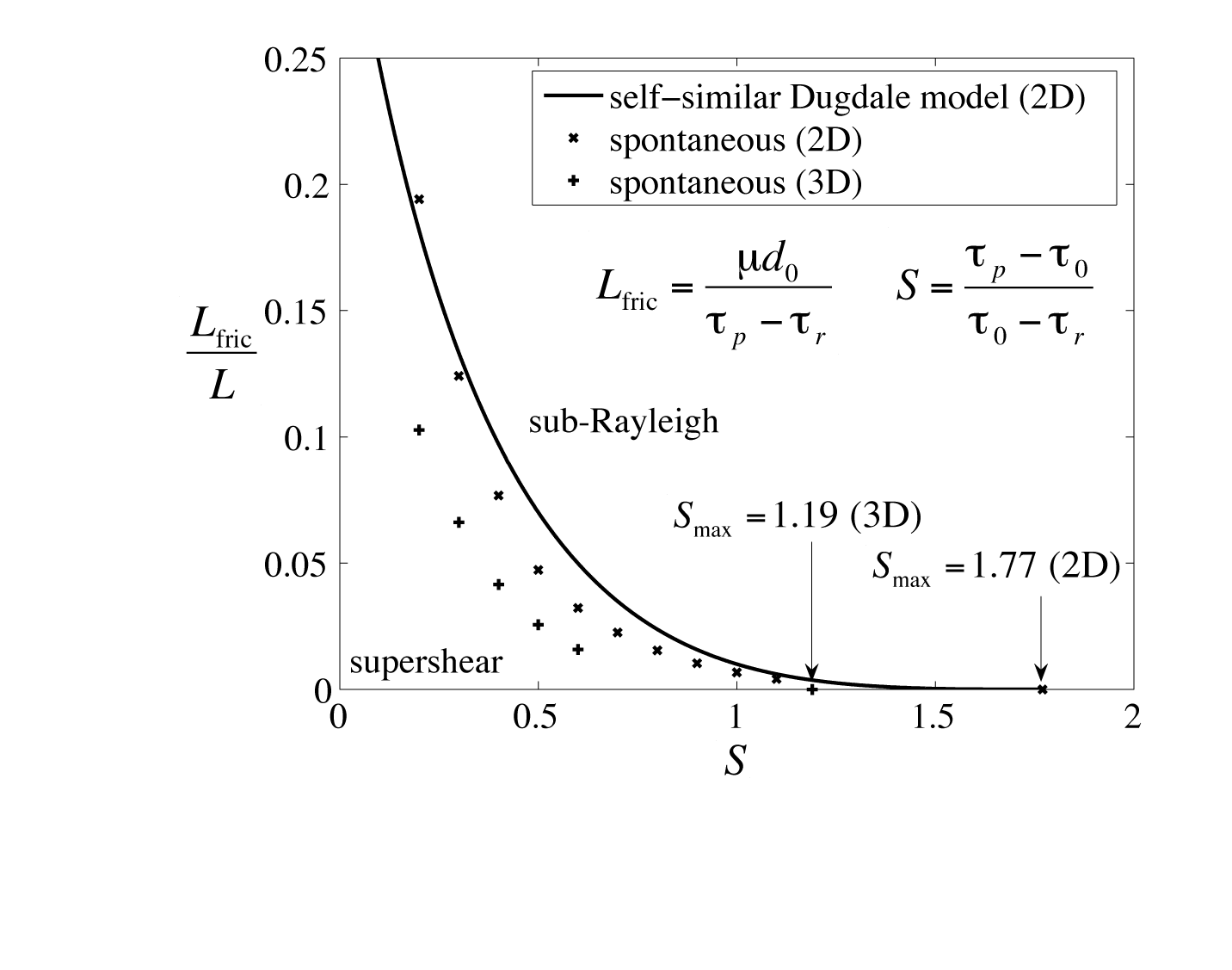Supershear Rupture Dynamics
(research report from SCEC 2006 annual meeting)
|
|
Objective: Quantify distance L ruptures must propagate before transitioning from sub-Rayleigh to supershear speeds in terms of slip-weakening friction law parameters (length Lfric) and initial stress level (seismic S ratio). Single theory explains transition dynamics for expanding ruptures in 2D and 3D (on unbounded and finite-width faults) and accelerating ruptures.
|
|
Supershear Transition: The transition from sub-Rayleigh to supershear propagation occurs when stresses moving at intersonic speeds ahead of expanding sub-Rayleigh ruptures exceed the peak strength of the fault, initiating slip within a daughter crack. Upon reaching a critical nucleation length, the daughter crack becomes dynamically unstable, expanding into a self-sustaining intersonic rupture. This mechanism holds in both 2D and 3D. On faults with uniform properties, the seismic S ratio [S=(&taup-&tau0)/(&tau0-&taur)], a measure of the initial loading stress, &tau0, relative to the peak and residual strengths, &taup and &taur, must be smaller than some critical value for the transition to occur. The maximum S value for unbounded faults in 3D is 1.19, smaller than the value of 1.77 that Andrews [1976; 1985] has shown to govern the transition in 2D. The supershear transition length (i.e., how far the rupture propagates before reaching intersonic speeds) is proportional to a length scale arising from the friction law governing the nucleation and stability of the daughter crack. The transition length is highly sensitive to the form of the slip-weakening law, even when the associated fracture energies are identical.
|

Fig. 1: Stress field ahead of expanding sub-Rayleigh crack (from self-similar analytical solution). The standard crack solution was modified in the "Dugdale model" by limiting stress to the peak strength (Dugdale slip-weakening law has strength &taup for slip less than d0; for larger slip, strength drops to &taur. When stress is bounded, slip occurs within a daughter crack. Slip velocity (also shown in figure) and slip in the daughter crack can be calculated exactly, as can the critical nucleation length at which the daughter crack becomes unstable. This permits an exact prediction of the supershear transition length.
|

Fig. 2: Plot of (inverse of) supershear transition length vs. seismic S ratio (small Smeans high initial stress, fault close to failure). There is nice agreement between the analytical prediction of transition length in the self-similar Dugdale model with numerical results from spontaneous rupture calculations in 2D. Numerical results for unbounded faults in 3D are also shown. The trend is similar in 3D, but the transition length is about twice as long as in 2D for the same value of S. In 3D, a sufficiently narrow fault width suppresses the transition; the critical width is approximately 0.8 times the transition length on an unbounded fault.
|

